Greetings! If you’re looking to add a touch of exotic beauty to your garden or home, look no further than Strelitzia Nicolai, also known as the Giant White Bird of Paradise. This magnificent plant, native to South Africa, is a showstopper with its large paddle-shaped leaves and clusters of stunning white flowers.
In this article, I’ll guide you through the essential steps to master the growth and care of your Strelitzia Nicolai, ensuring it thrives and rewards you with its breathtaking blooms and lush foliage.
So, without further ado, let’s dive into the fascinating world of Strelitzia Nicolai and discover the secrets to nurturing this remarkable plant. Whether you’re a seasoned gardener or a beginner, I’m here to help you every step of the way!
Appearance of Strelitzia Nicolai


Strelitzia Nicolai, also known as the giant white bird of paradise, is a stunning plant that adds an exotic touch to any space. With its grand presence and unique features, this plant is sure to capture attention and create a focal point in your garden or home.
The most striking characteristic of Strelitzia Nicolai is its large, paddle-shaped leaves that can reach impressive lengths of up to 6 feet. These glossy, dark green leaves provide an elegant backdrop and bring a sense of tropical lushness to your surroundings.
But the beauty of Strelitzia Nicolai doesn’t stop there. This remarkable plant also produces clusters of spectacular white flowers that resemble the beak and plumage of a bird. These eye-catching blooms emerge during the warm season and can last for several weeks, adding a touch of drama and beauty to your indoor or outdoor space.
 Strelitzia Nicolai isn’t just a visual treat. It has a slow-release growth pattern, making it an ideal long-term companion for gardeners. Remarkably, it can live for over 20 years if provided with the right care, showcasing nature’s resilience and the enduring beauty of the plant kingdom.
Strelitzia Nicolai isn’t just a visual treat. It has a slow-release growth pattern, making it an ideal long-term companion for gardeners. Remarkably, it can live for over 20 years if provided with the right care, showcasing nature’s resilience and the enduring beauty of the plant kingdom.
Light Requirements for Strelitzia Nicolai
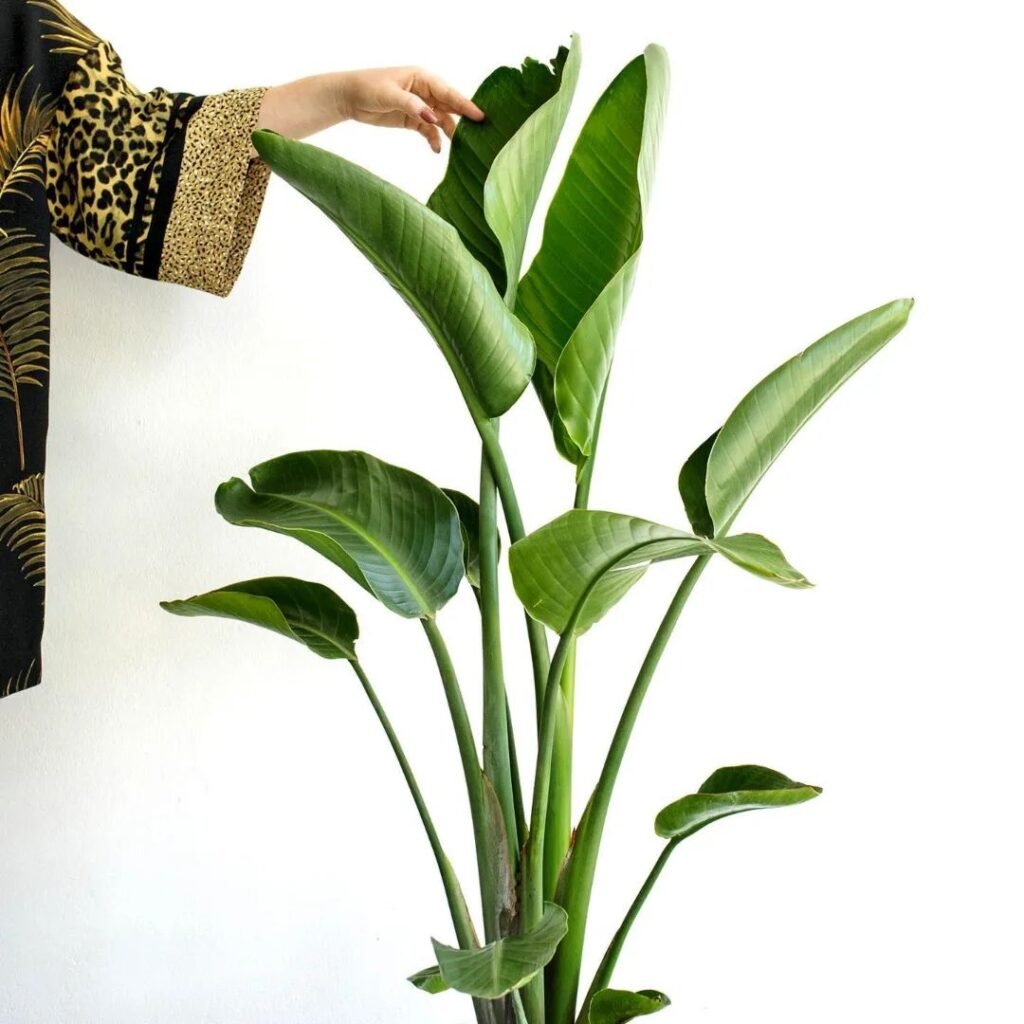
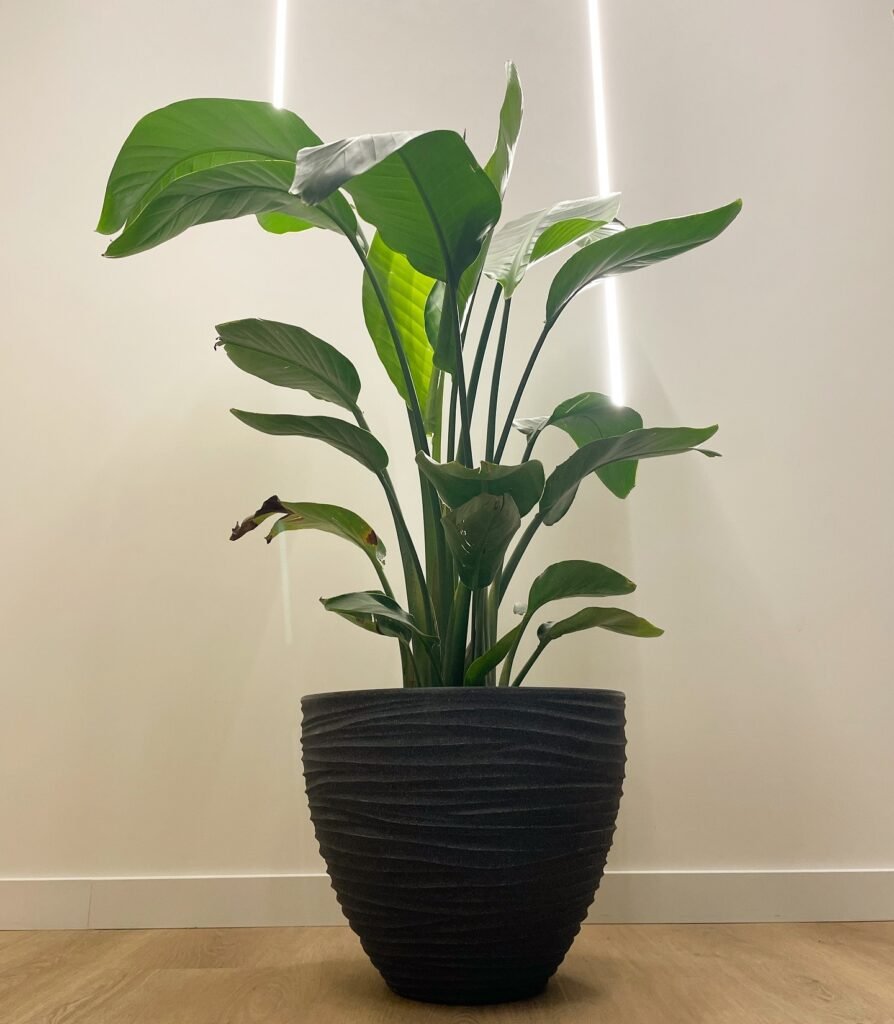
Strelitzia Nicolai, also known as the Giant White Bird of Paradise, thrives in bright, indirect sunlight. To ensure the optimal growth of your Strelitzia Nicolai, it’s important to provide it with the right amount of light.
If you have an indoor Strelitzia Nicolai, place it in a sunny spot that receives at least 6 hours of daylight. However, be careful not to expose it to direct sunlight, as it can harm the leaves and cause them to scorch. Finding a balance between brightness and indirect sunlight is crucial for the health and well-being of your indoor Strelitzia Nicolai.
If you’re growing Strelitzia Nicolai outdoors in the UK, it’s important to choose a location that offers partial shade. This will help protect the plant from excessive sunlight, ensuring that it thrives in the outdoor environment. The UK climate can be unpredictable, so providing partial shade will help maintain the ideal light conditions for your Strelitzia Nicolai.
Remember, the right amount of light is essential for the proper growth and blooming of your Strelitzia Nicolai. By providing it with the appropriate level of brightness, you’ll ensure that your plant flourishes and adds a touch of natural beauty to your space.

Watering Tips for Strelitzia Nicolai (Giant White Bird)
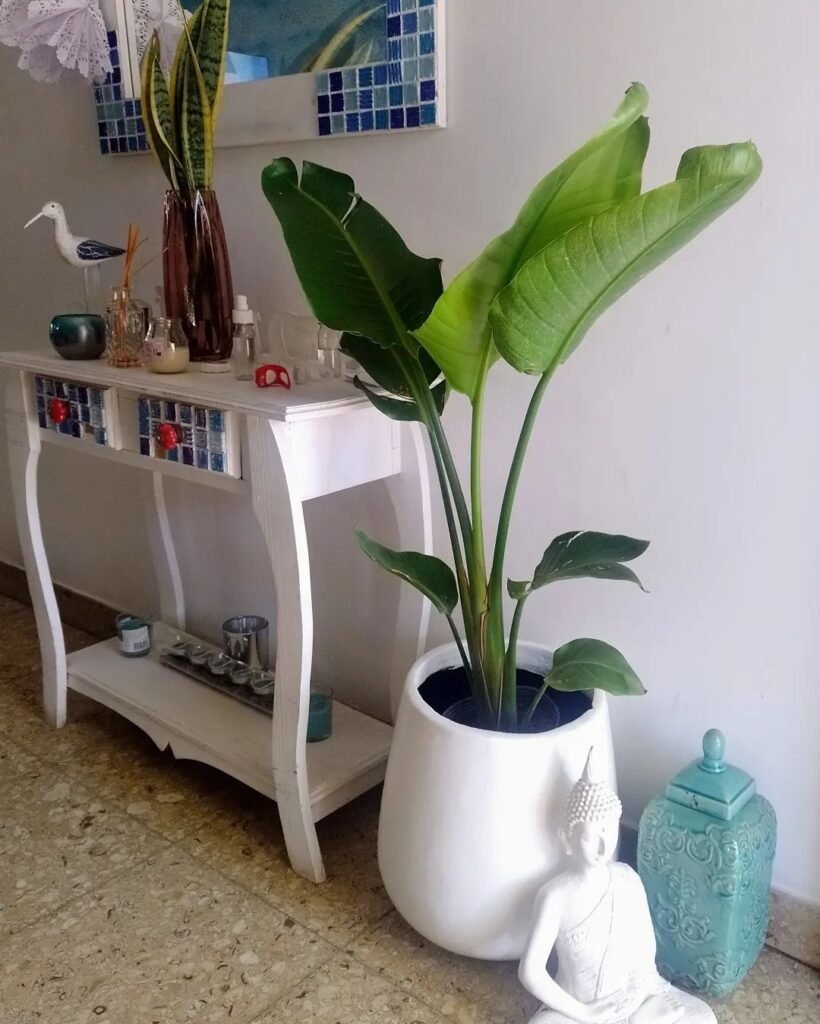
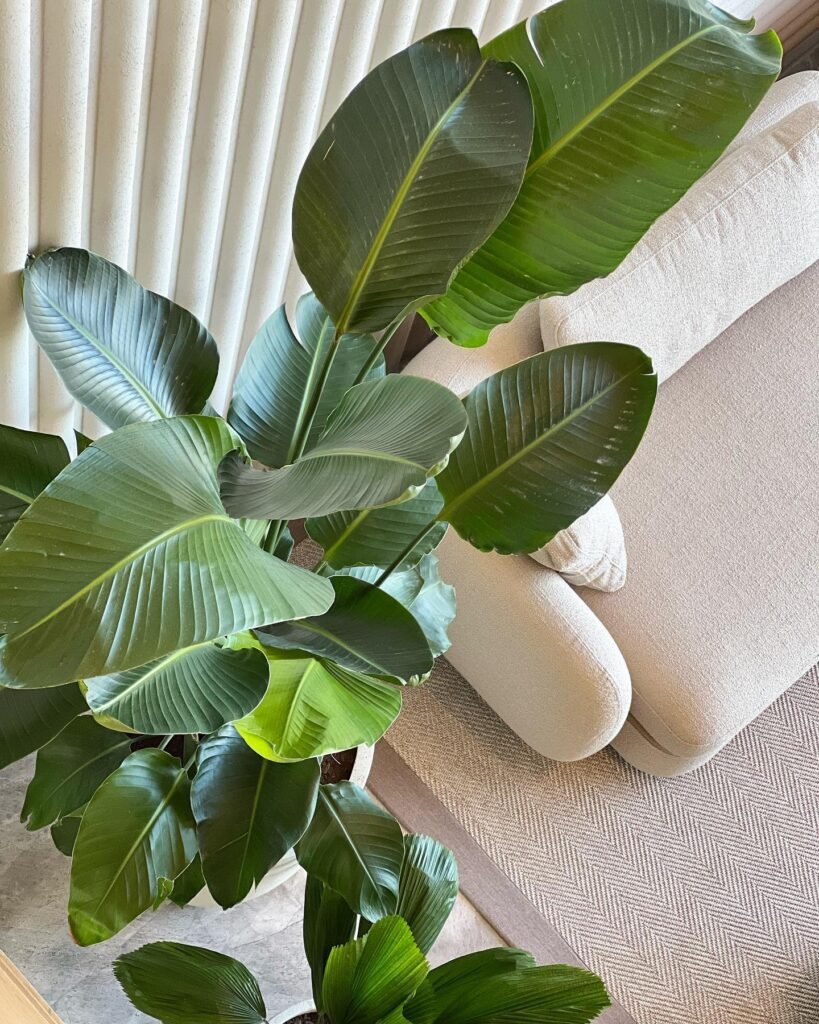
Proper watering is crucial for the health and well-being of your Strelitzia Nicolai, also known as the Giant White Bird of Paradise. To ensure optimal growth and avoid common issues such as drooping leaves or browning, it’s important to follow these watering tips:
- Strelitzia Nicolai prefers slightly moist soil. Avoid overwatering as it can lead to root rot and other problems.
- During the growing season, water your plant once a week or whenever the top inch of soil feels dry. This frequency may vary depending on the temperature and humidity levels of your environment.
- When watering, pour water evenly around the base of the plant, allowing it to soak into the soil.
- Ensure that excess water drains out of the pot to prevent waterlogging. Proper drainage is essential to avoid root rot.
Observing the condition of your Strelitzia Nicolai’s leaves can provide important clues about its watering needs. If you notice the leaves drooping or turning brown, it may indicate overwatering. On the other hand, if the leaves curl or become crispy, it could be a sign of underwatering. Finding the right balance of watering is key to maintaining the health and beauty of your Strelitzia Nicolai.
Remember, Strelitzia Nicolai is a tropical plant, so it’s best to mimic its natural habitat by providing consistent moisture without saturating the soil.

Fertilizing and Soil for Strelitzia Nicolai

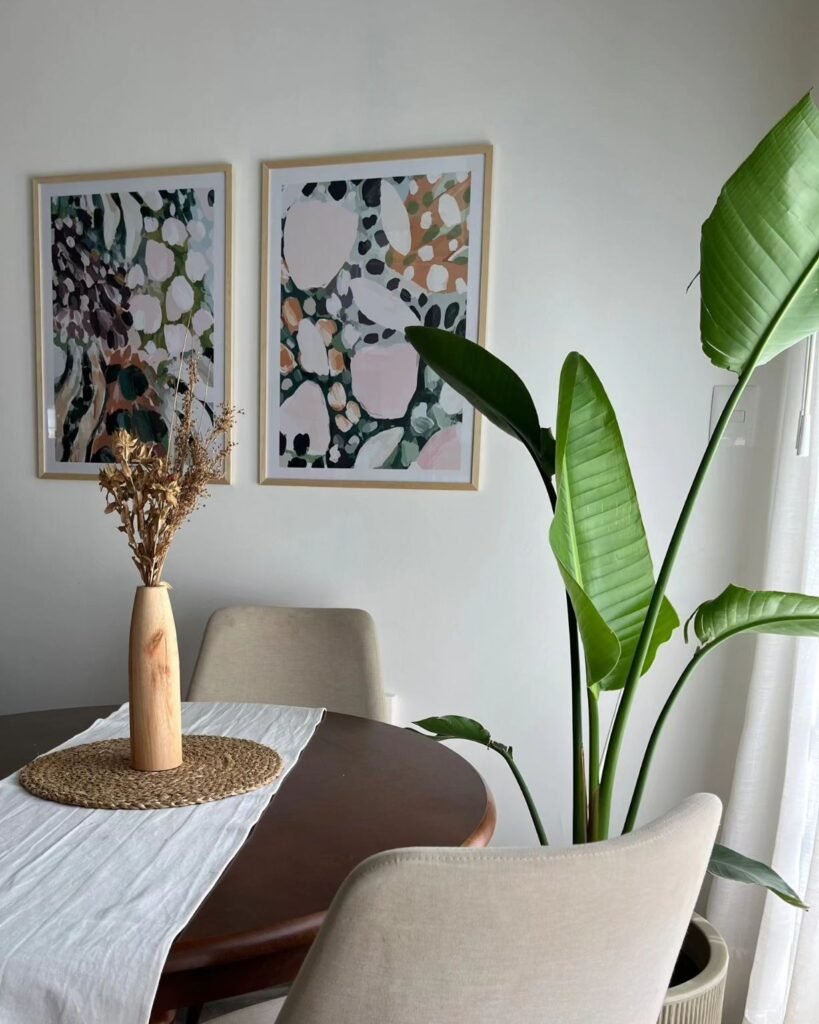
For optimal growth and vibrant blooms, providing the right soil and fertilization is essential in caring for your Strelitzia Nicolai. This magnificent plant thrives in a rich, well-draining potting mix that promotes healthy root development. To enhance soil drainage, you can add perlite or sand to the mix, ensuring excess water doesn’t accumulate around the roots.
During the growing season, it’s important to fertilize your Strelitzia Nicolai every two weeks with a balanced, water-soluble fertilizer. This will supply the necessary nutrients for vigorous growth and blooming. When selecting a fertilizer, choose one that is specifically formulated for flowering plants, as it will provide the ideal combination of macro and micronutrients.
Regular fertilization is key to achieving optimal growth and vibrant blooms in your Strelitzia Nicolai.
However, it’s important to reduce fertilization during autumn and winter, as the plant’s growth naturally slows down during these periods. Adjusting your fertilization routine helps prevent excessive nutrient buildup in the soil and allows the Strelitzia Nicolai to enter a dormant phase, promoting overall health.
When applying the fertilizer, follow the manufacturer’s instructions regarding the dosage and application method. Generally, it’s recommended to dilute the fertilizer in water and apply it to the soil around the base of the plant. Avoid applying the fertilizer directly to the leaves, as this can cause burns or damage.
Fertilizing Tips for Strelitzia Nicolai:
- Use a balanced, water-soluble fertilizer specifically formulated for flowering plants.
- Fertilize every two weeks during the growing season.
- Reduce fertilization in autumn and winter.
- Dilute the fertilizer according to the manufacturer’s instructions.
- Apply the fertilizer to the soil around the base of the plant.

Pruning and Maintenance for Strelitzia Nicolai

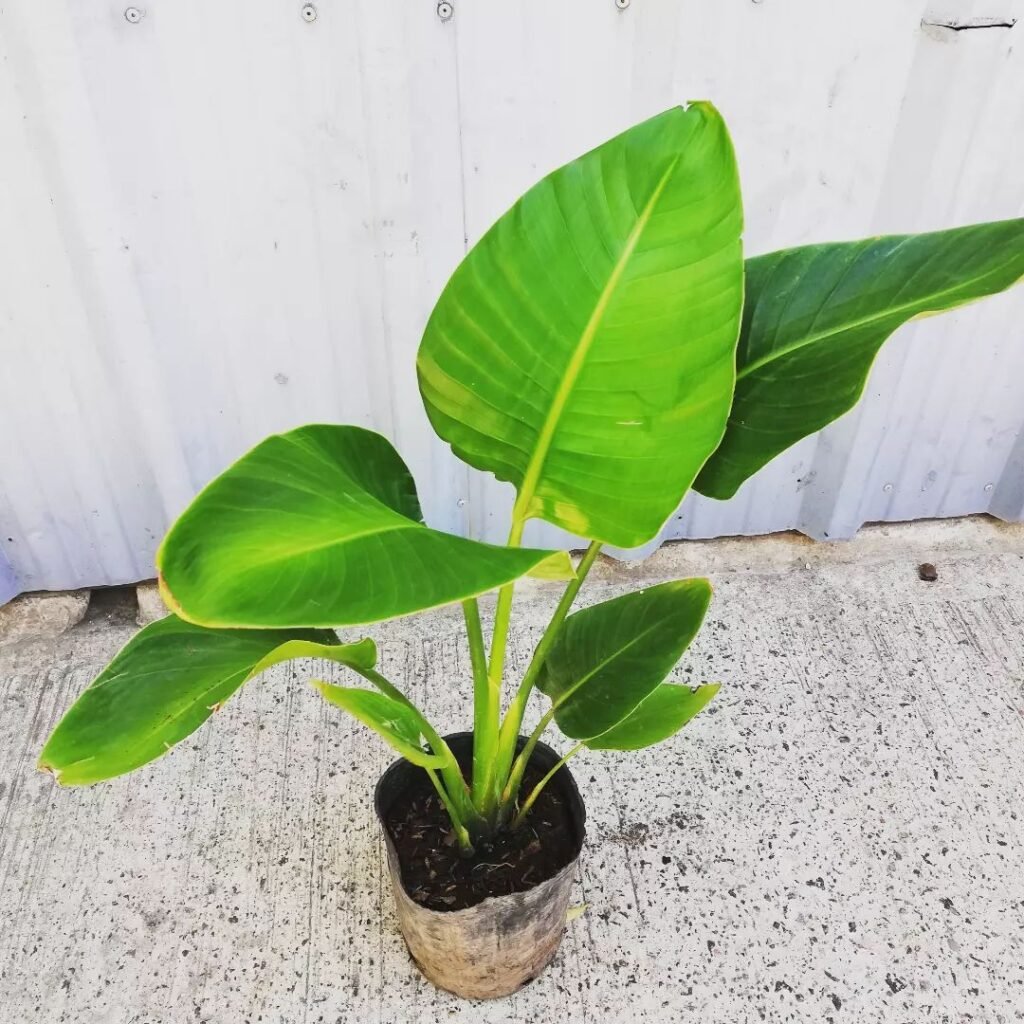
Regular pruning is essential for the maintenance of your Strelitzia Nicolai. By removing dead or damaged leaves, you can encourage new growth and maintain an attractive appearance for your plant. Remember to wipe the leaves with a damp cloth to remove any dust and keep them clean. Pruning plays a crucial role, especially considering the smaller leaf size of the Strelitzia Nicolai. Additionally, it’s perfectly normal for the leaves of the Bird of Paradise to split along their natural lines of weakness, which adds a healthy and characteristic touch to the plant’s overall appeal.
With proper pruning and maintenance, you’ll ensure the continued health and aesthetic beauty of your Strelitzia Nicolai. By dedicating time and attention to this essential aspect of care, you’ll be rewarded with a flourishing and impressive plant.

Propagating Strelitzia Nicolai (Giant White Bird)
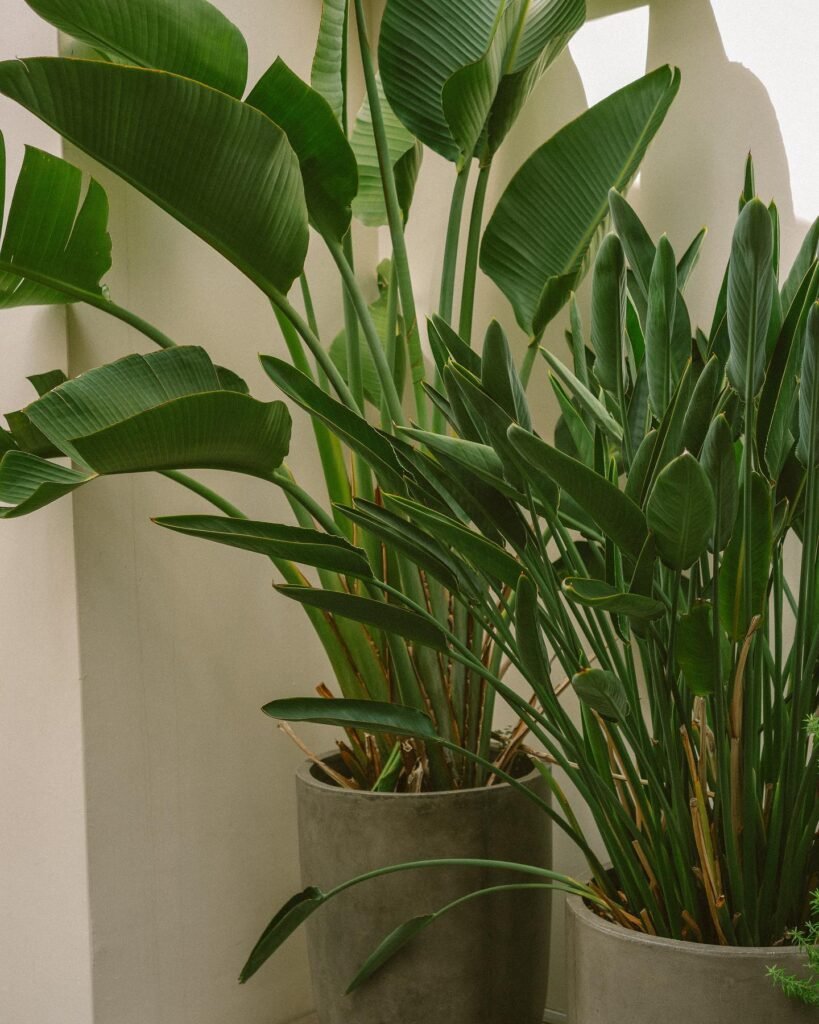
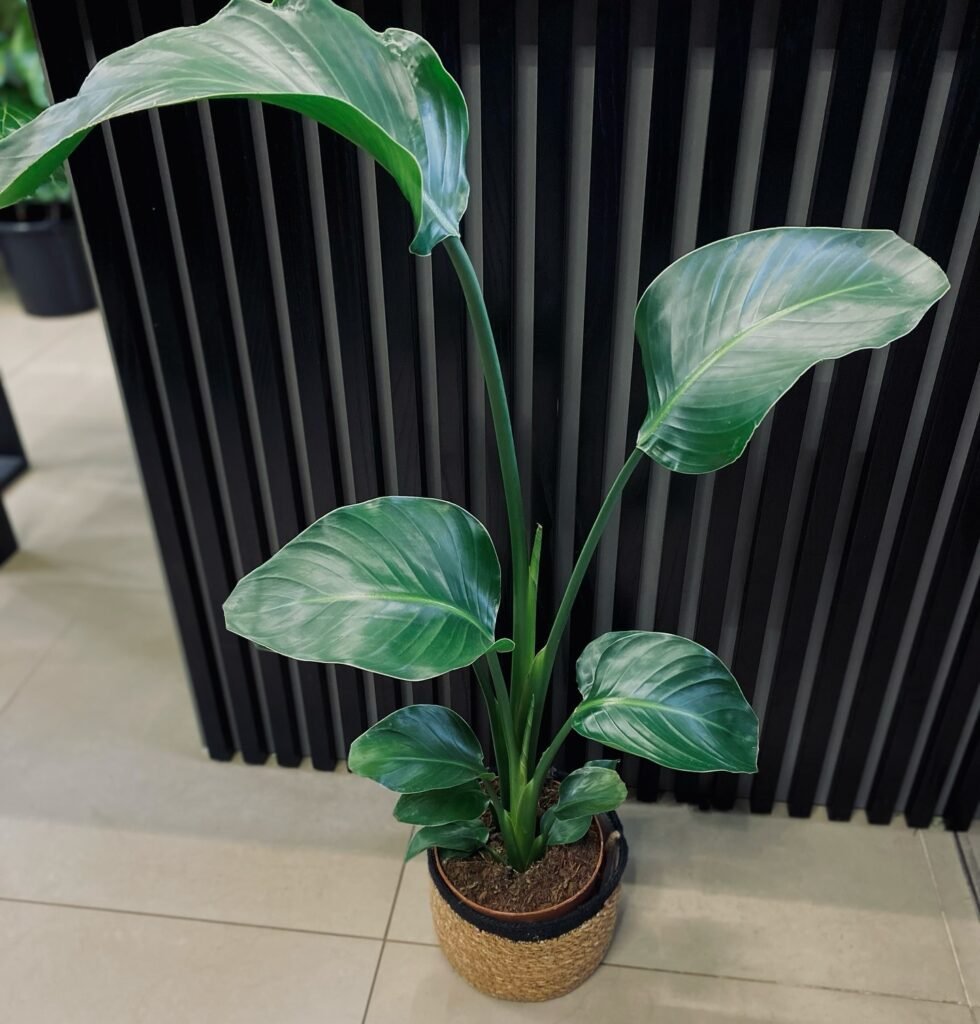
If you’re looking to expand your Strelitzia Nicolai collection and enjoy the beauty of multiple plants, propagating Strelitzia Nicolai through division is a great way to do so. As the plant grows, it may produce side shoots or offsets that can be separated from the main plant and potted individually. To ensure successful propagation, it’s important to make sure that each division has its own set of roots.
Strelitzia Nicolai is known for its relatively fast growth rate, especially when provided with optimal growing conditions. By following proper care and propagation techniques, you can successfully propagate and nurture new Strelitzia Nicolai plants. This will not only allow you to enjoy the aesthetic appeal of multiple plants but also provide you with a sense of satisfaction and accomplishment.
Remember to provide each division with the same level of care and attention as the parent plant. With time and consistent care, your propagated Strelitzia Nicolai plants will thrive and bring beauty to your garden or indoor space.

Repotting Tips for Strelitzia Nicolai
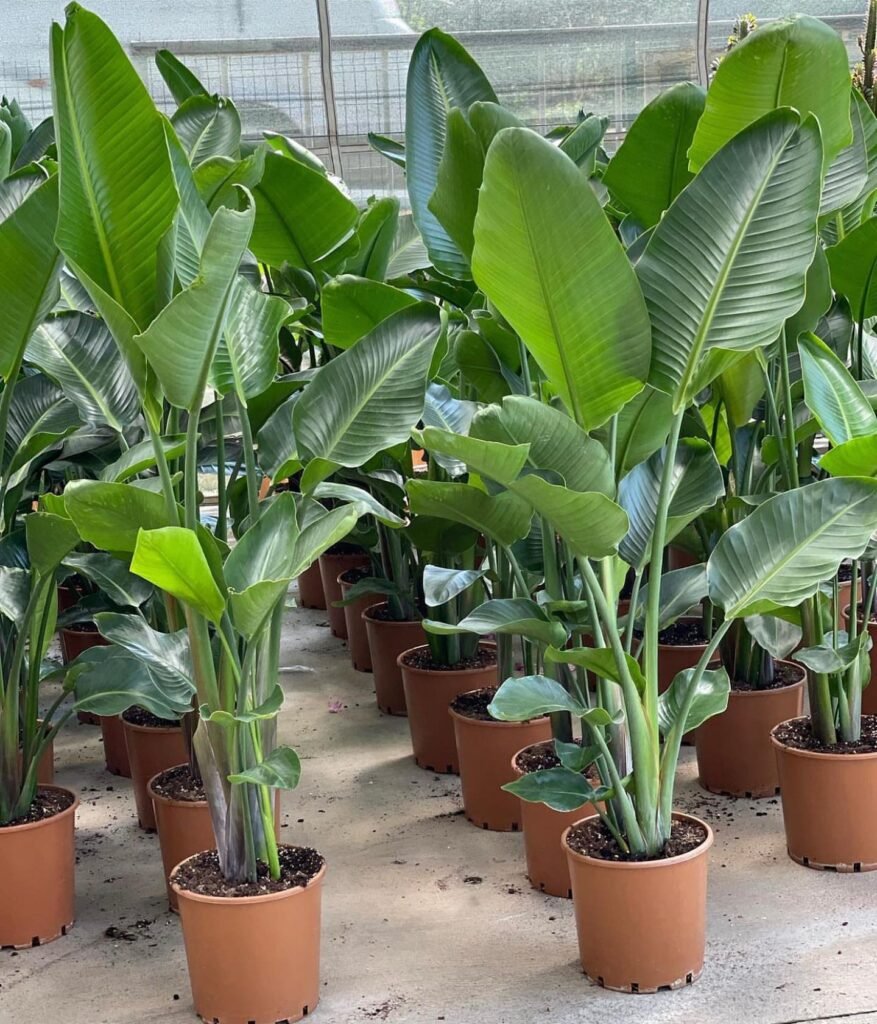

Repotting Strelitzia Nicolai is an essential step in maintaining the health and vitality of your plant. It is recommended to repot Strelitzia Nicolai every two to three years, using a slightly larger pot. This allows the plant enough room for growth and prevents root binding, which can hamper its development.
When repotting, carefully remove the plant from its current container, ensuring not to damage the roots. Gently loosen the root ball and inspect for any signs of damage or rot. If necessary, prune away any unhealthy or overcrowded roots.
Choose a new pot that is larger in size, with proper drainage holes to prevent waterlogged soil. Fill the pot with a well-draining potting mix, ensuring that it is firmly packed around the roots. Place the plant in the center of the pot and backfill with additional soil, gently tamping it down.
Water the repotted Strelitzia Nicolai thoroughly to settle the soil and ensure proper hydration. Be cautious not to overwater, as excessive moisture can lead to root rot.
Repotting is also an opportune time to divide the plant if it has become too large for its current container. Carefully separate the sections, ensuring that each division has its own set of roots. Repot the divided sections into their respective pots, following the same repotting process.
 Strelitzia Nicolai, renowned for its striking resemblance to a bird in flight, is named after the Bird of Paradise. Its large, blue and white flowers mimic a bird’s plumage, making it a stunning addition to any garden or indoor space. Not just a beauty, it also purifies the air, enhancing your living environment.
Strelitzia Nicolai, renowned for its striking resemblance to a bird in flight, is named after the Bird of Paradise. Its large, blue and white flowers mimic a bird’s plumage, making it a stunning addition to any garden or indoor space. Not just a beauty, it also purifies the air, enhancing your living environment.
Keeping Strelitzia Nicolai Safe Around Pets
Strelitzia Nicolai, also known as the Giant White Bird of Paradise, is a beautiful, non-toxic plant for both cats and dogs, making it a great choice for pet owners looking to spruce up their home with greenery. Despite its safety, pets may still be tempted to chew on its leaves, which could lead to mild gastrointestinal upset.
By taking simple precautions, you can enjoy the elegance of Strelitzia Nicolai without worrying about your pets safety. This approach ensures a pet friendly home where both your plants and pets can thrive.
Strelitzia Nicolai and Flowering
Strelitzia Nicolai is renowned for its stunning white flowers that bear a striking resemblance to a bird in flight. However, it is important to note that the non-flowering variety, often referred to as Giant White Bird of Paradise, does not produce flowers. If your goal is to appreciate the beautiful blooms, it is advisable to choose the Strelitzia reginae variety instead. The process of flowering for Strelitzia Nicolai can be quite lengthy, taking several years to occur. Patience is key in this regard. By providing your Strelitzia Nicolai with the proper care and ideal growing conditions, you significantly enhance the likelihood of it eventually producing those exquisite flowers.
Key Points:
- The non-flowering Strelitzia Nicolai variety does not produce flowers. Opt for the Strelitzia reginae variety if you desire blooms.
- Flowering can take several years to manifest, so patience and consistent care are crucial.
- Providing optimal growing conditions increases the chances of your Strelitzia Nicolai eventually producing beautiful flowers.
Helpful Videos about Strelitzia Nicolai (Giant White Bird)
In this curated collection, I’ve gathered a series of videos that offer practical advice on caring for your Strelitzia Nicolai, also known as the Giant White Bird of Paradise. These resources are crafted to guide you through the essentials of ensuring your plant’s health and vitality.
- STRELITZIA NICOLAI CARE!
Whether you’re just starting your journey with indoor plants or looking to refine your gardening skills, these videos are designed to enrich your experience with Strelitzia Nicolai. Enjoy discovering how to help your plant flourish, reaching its full, magnificent potential.
Frequently Asked Questions about Strelitzia Nicolai (Giant White Bird)

Curious about nurturing your Strelitzia Nicolai? Dive into my comprehensive FAQ for expert tips on flourishing your Giant Bird of Paradise. Whether it’s optimal sunlight, watering techniques, or general care, I’ve compiled everything you need for a thriving plant.
Strelitzia Nicolai, known as the Giant White Bird of Paradise, is a tropical plant famous for its large, glossy leaves and bird-like flowers.
Water when the top inch of soil feels dry, typically once a week, but adjust according to temperature and light.
Yes, it thrives in bright, indirect light. Direct sunlight can scorch the leaves, so a little shade is beneficial.
A well-draining, loamy soil mix is ideal. You can use a general-purpose potting mix with added perlite for drainage.
Repot every 2-3 years or when roots outgrow the pot. Choose a pot only slightly larger than the previous one.
In the UK, Strelitzia Nicolai can be grown outdoors during the warmer months, typically from late spring to early autumn. However, it should be brought indoors or protected when temperatures drop, as it is not frost-hardy. In milder regions, with protection from cold winds and frost, it might survive outside with adequate shelter.
Use a balanced, slow-release fertiliser every few months during the growing season (spring and summer).
Yellow leaves can indicate overwatering, underwatering, or nutrient deficiencies. Assess your watering routine and fertilise if necessary.
Indoors, it can reach up to 2-3 metres. Outdoors, it may grow taller, up to 6 metres.
Flowering indoors is rare and requires optimal conditions: high light, sufficient space, and time (often several years).
Remove dead or damaged leaves at the base to encourage new growth. Use clean, sharp scissors or secateurs.
It’s generally considered non-toxic, but ingestion can cause mild gastrointestinal upset. Keep an eye on pets around the plant.
Ensure adequate light, don’t overwater, and fertilise regularly during the growing season.
Growth can be slow if the plant lacks light, is pot-bound, or isn’t receiving enough nutrients. Check these conditions and adjust care as needed.
Yes, it can be propagated by dividing the root ball during repotting. Ensure each division has at least one shoot.
Regularly check for signs of pests like spider mites or aphids. Wipe leaves with a damp cloth and use insecticidal soap or neem oil for treatment.
Strelitzia Nicolai prefers temperatures between 18°C and 24°C. Avoid exposing it to temperatures below 10°C to prevent damage.
Place a humidity tray under the pot or use a room humidifier. Misting the leaves can also help, especially in dry indoor environments.
While it prefers bright, indirect light, Strelitzia Nicolai can tolerate partial shade. However, too little light may inhibit growth and flowering.
Refresh the soil or repot your plant every 2-3 years to ensure it has the nutrients it needs and to prevent soil compaction.
I hope this helps you get the hang of looking after your Strelitzia Nicolai. Got more questions? Just ask in the comments, and I’ll get back to you. Remember, we all start from scratch, and there’s always more cool stuff to learn about your plants.





